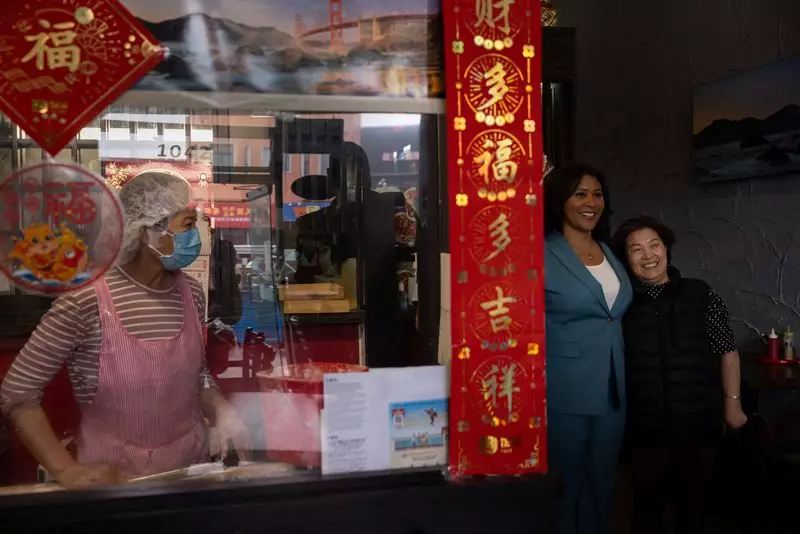San Francisco’s upcoming mayoral election is not just a political contest; it is a pivotal moment that could redefine the trajectory of a city long celebrated for its progressiveness but now grappling with substantial socio-economic issues. As the residents prepare to cast their votes on October 7, the pressing concerns of housing affordability, rising crime rates, and homelessness dominate the narrative. This election represents an opportunity for San Franciscans to envision a new future and choose leadership that they believe can effectively navigate out of the challenges that have emerged post-COVID-19.
San Francisco has become emblematic of the broader challenges confronting urban centers across the United States, especially as the economy has experienced uneven recovery in the wake of the pandemic. Critics characterize the city as stuck in “doom loop” scenarios, rife with visible homelessness, rampant drug issues, and abandoned storefronts. Statistics starkly illustrate that the city holds the highest office vacancy rate in the United States at 32%, highlighting the struggles of its downtown recovery effort.
Moreover, the leadership in the city has come under scrutiny as local elections reflect voter frustrations and desires for change. Newly passed ballot measures this year signify a political shift toward a more centrist approach, showcasing the electorate’s demand for practical solutions over ideological debates. The introduction of advanced police surveillance technology and mandatory drug assessments reveal a pivot towards prioritizing safety and addressing the ongoing drug crisis.
The mayoral race sees incumbent Mayor London Breed facing four main opponents, all hailing from the Democratic party. Recent polling suggests that the electorate’s focus veers sharply towards crime and public safety, while traditional progressive issues like housing and social justice seem to have taken a backseat in voter priorities. This shift, highlighted by San Francisco State University political science professor Jason McDaniel, emphasizes the evolving political climate that no longer aligns with the priorities of the city’s historically progressive base.
With momentum building for the moderate and centrist Democratic factions, candidates like Mark Farrell and Daniel Lurie gain traction, reflecting the electorate’s desire for actionable plans to tackle rising crime rather than reflect on ideological perspectives. The ranked-choice voting system offers voters a diverse array of options but also underscores the division within the party, as candidates must consolidate their platforms to resonate with the city’s increasingly pragmatic voters.
The Effects of Timing
An interesting twist in this electoral cycle is the one-year delay introduced by a 2022 ballot measure that moved local elections to even-numbered years, hoping to align them with presidential races for increased turnout. This delay may have worked in Breed’s favor, allowing her administration to implement strategies to improve public perception. Crime rates have reportedly decreased by 32% year-over-year, partly attributed to increased police resources and enhanced surveillance measures.
However, opponents, including candidates like Farrell, argue that while statistics may showcase improvement, the systemic issues remain largely untouched. Farrell’s proposal for a “fentanyl state of emergency” highlights the urgency he perceives in addressing the drug crisis effectively and calls for greater involvement from both state and federal peering into the city’s needs.
Housing: The Unforeseen Casualty
Housing, a crucial issue, has become a contentious point of debate among candidates, revealing the challenges of addressing a lingering crisis while balancing the city’s identity. Mayor Breed acknowledges the arduous permitting processes that have hampered housing development, attributing the slow pace to policies that complicate construction. Despite the pressing need for new units, only a meager 500 permits were granted by mid-2023, prompting state intervention to expedite development processes.
The intersection of rising housing costs and homelessness paints a troubling picture, with around 8,000 individuals estimated to experience homelessness in San Francisco. This situation remains difficult to reconcile, especially in a city where the median household income ranks among the highest in the nation. Candidates like Lurie express that the current administration must bolster efforts to transition individuals out of homelessness effectively, rather than merely shifting them around the city.
As San Francisco stands at a critical juncture, navigating this electoral landscape will require discerning leadership that prioritizes realistic solutions over partisan divides. Voters face a choice between candidates who embody contrasting philosophies on managing the city’s pressing issues. Who emerges victorious will influence not just the fate of the city, but also signify which values San Francisco residents choose to uphold as they strive for a more equitable and functional urban environment. The upcoming election could redefine what it means to be a progressive city in the 21st century, as voters grapple with the fundamental question of what truly matters to their community’s future.

